Smbfjdc - Scratch My Brain

More Posts from Smbfjdc and Others
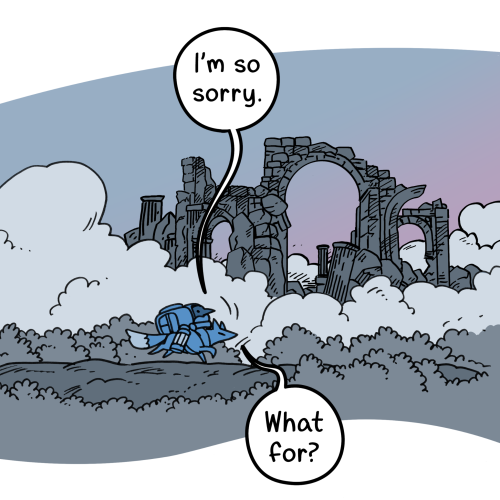
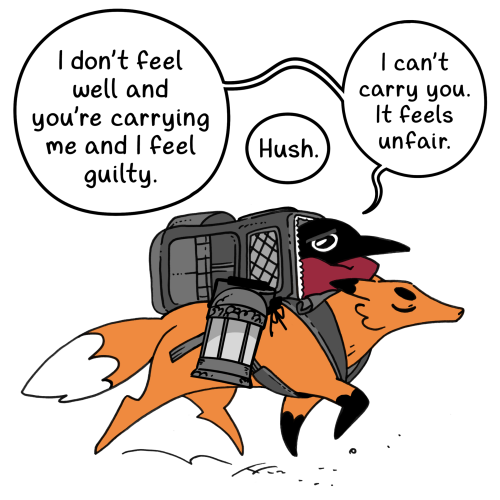
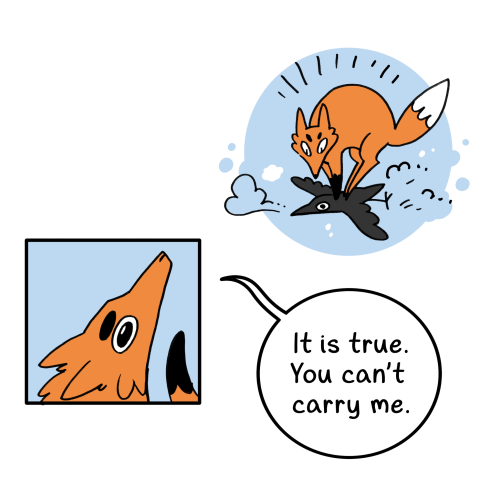
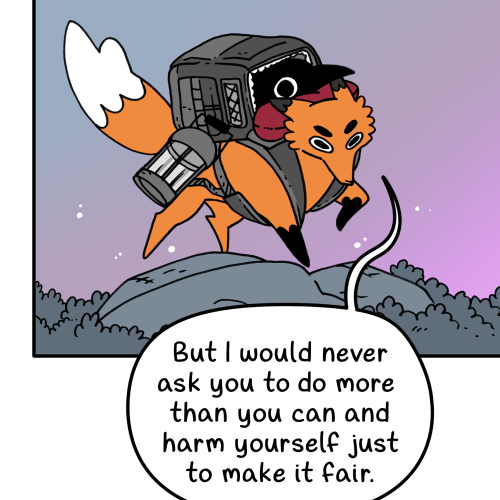
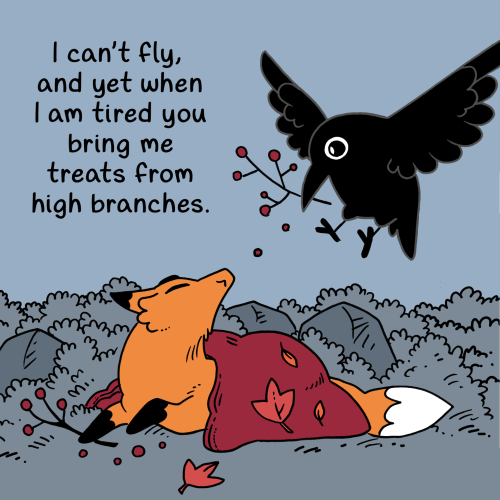


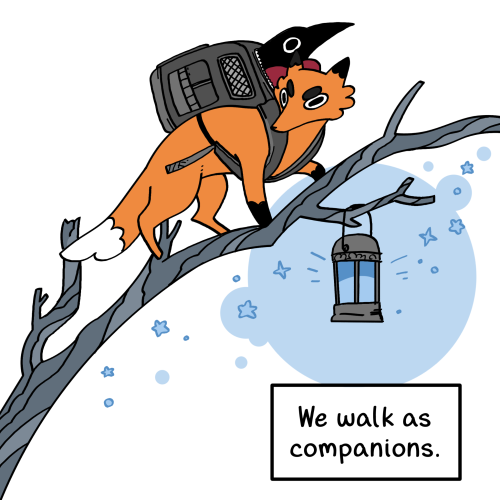
New Crow Time 🐦⬛🦊🌟
![Another Morning [phone Ddl]](https://64.media.tumblr.com/2bd7ab5f1057dff08acf3cb0287b9cf5/99e0069539d06978-a9/s500x750/4947c886c9327b43183955d4410e7bee88dccc28.png)
another morning [phone ddl]

Close to you (2/2)
chrollo simps heres some required reading:
art of war by sun tzu
wuthering heights by emily brontë
nadja by andre breton (en français)
pride and prejudice by jane austen
notes from the underground by fyodor dotoevsky
honestly anything by dotoevsky. here’s his full works in a pdf
while we’re on russian theory: the communist manifesto by karl marx
the metamorphosis by franz kafka
waiting for godot by samuel beckett / en attendant godot (en français)
the merchant of venice by william shakespere
soloman’s song of songs + the gospel of judas
no exit by jean-paul satre / huis clos (en français)
a room of one’s own by virginia woolf
fideleo by beethoven / here’s the opera online
mostlyvoidpartiallystarric


a gender connected to the phrase “mostly void, partially stars” from welcome to night vale. this gender could be connected to stars on their own, the lights over the arby’s, and cecil gershwin palmer’s relationship with carlos the scientist
the black is for the void, the blue is for the night sky, and the purple is for queer love
Book Themed Neos/Xenos/Emojis

Velician
A gender related to libraries, bookstores, books, and the aesthetics of them.

Bookgender
it may be felt as a connection to certain genres of books or with the aesthetics of books in general.

Livrestormgender
A gender related to reading, libraries, the night, and storms.

Genregender
related to certain genre(s) of writing in some way

Biblioique
the feeling you get when you first open a book, the smell of old books mixed with the new, the feeling of being sucked into a new world as a way to escape, and the feeling of being at home in the pages. coined by @pupyzu (i would check them out)

Fitcivelic
a gender related to fiction books. coined by @pupyzu

Nonfictivelic
a gender related to nonfiction books. coined by @pupyzu

Comicvelic
a gender related to comic books. coined by @pupyzu (i would check them out, they have a lot more of these book related themed ones and a lot of others xenos)
Neopronouns
> Page/page/pages/pages/pageself
> Word/word/words/words/wordself
> Book/shelf/bookshelf/books/bookself
> Wri/write/writes/writes/writeself
> Book/book/books/books/bookself
> Novel/novel/novels/novels/novelself
> Ink/ink/inks/inks/inkself
> Pen/pen/pens/pens/penself
> Fic/fiction/fictions/fictions/fictionself
> Wri/write/writes/writes/writeself
> Script/script/scripts/scripts/scriptself
EmojiPronouns
> 📖/📖/📖s/📖s/📖self
> 📚/📚/📚s/📚s/📚self
> 📔/📔/📔s/📔s/📔self
> 📕/📕/📕s/📕s/📕self
> ✏️/✏️/✏️s/✏️s/✏️self
> 📄/📄/📄s/📄s/📄self
> 🔖/🔖/🔖s/🔖s/🔖self
Guide To Ouji Fashion For Beginners: Dos And Don’ts
Boystyle (ボーイスタイル), also referred to as Ouji (王子) in pop culture is a fashion style that is frequently associated with lolita fashion. Although it is not Lolita style per se, it is more of a masculine counterpart of the fashion style. It shares many of the aesthetic elements of the Lolita style. If you are a Lolita fan, you are bound to fall in love with the Ouji fashion, also called Kodona Fashion.
The Ouji fashion follows its rules and can be pretty different from the Lolita fashion. Given that the word "ouji" means "prince," it contrasts with the princess-inspired Lolita aesthetic. However, this is just a brief overview of the world of Ouji fashion. Keep reading to dive deep into the beautiful world of Ouji Lolita fashion!
A Short Introduction To Ouji Fashion
The Ouji fashion is a Japanese trend frequently considered the Lolita fashion’s masculine counterpart. Don't mistake it for a sub-style, though; it is a full-fledged fashion item in itself. Since “Ouji” means prince in Japanese, you may think of it as the male Lolita fashion or even as the “Prince” to the Lolita fashion’s “princess.”
The primary distinction between the Ouji look and its feminine counterpart is the use of pants rather than skirts. The Victorian clothing style has also had an impact on the pants, which come in a variety of lengths. Vests and blouses will go with them. Most outfits may pair a waistcoat with it to complete the look.
So a typical Ouji outfit consists of the following: a blouse, pants, a vest or a jacket, shoes, socks, and, if desired, a hat. When you put these together to create an Ouji coordinate, it should look masculine yet elegant. A vital factor to note is that, although it’s supposed to be "masculine" fashion, anyone –regardless of gender- can wear it.
Types Of Ouji Fashion Style
There are numerous sub styles and themes for Ouji fashion. It has the same three primary substyles as Lolita: classic, sweet, and gothic. However, there is a lot more overlap between these sub-styles, which aren’t as clearly defined. Even so, let’s look at the different types of Ouji fashion styles -
1. Sweet Ouji
The sweet Ouji style refers to more adorable, youthful, and innocent coordination. This style adheres to some of the same guidelines as Sweet Lolita, a sub-style of the Lolita fashion. But this style has a lot more of a “Shota” or young boy vibe.

People who wear this style often pair it with a cute Lolita to twin with them. Some common themes or motifs are school-style, circus, sailor, and white rabbits. There aren’t many hard and fast rules for the set.
But generally, the outfit should include a blouse with ruffles. The pant length will depend on the person’s tastes, but pumpkin or puffed ones are more common. Other common elements include cropped or high-waisted vests, ribbon neck bows, mini crowns, or mini hats.
2. Classic Ouji
The emphasis on elegance and a refined air characterize classic Ouji. This substyle has a more traditional “Princely” feeling. It is more sophisticated than sweet—most Ouji that aren't overly sweet or gothic fall within the classic Ouji substyle. The whole coordination should give off a refined and more mature vibe.

People who practice this style frequently wear boots. They also have specific buttons and structures for the jacket to be considered Classic Ouji, and even the pockets are unique.
The Classic Ouji fashion follows a significant historical influence. The typical elements of this style include – knee-length or longer pants, full-sized bicorn, tricorn or cavalier hats, waist-length or longer vests and jackets, and elegant jabots or neck-bows. The most common themes or motifs can be military, pirate, or royalty.
3. Gothic Ouji
Gothic Ouji exudes a sense of darkness that can take the form of opulent decadence, distressed decay, or a simple, angular design. Generally, Gothic Oujis favor darker color schemes, makeup, patterns, and fashion—people who follow this outfit typically twin with the Gothic Lolitas.

To perfect the Gothic Ouji look, you must have a lot of specific details, just like the two styles mentioned above. The buttons, bows, and pockets should follow the particular Ouji rules. This Ouji style often gets inspiration from Visual-Kei elements such as big hair, platform boots, and flamboyance. The most common aspect of this Ouji style is the color black.
The outfit features jewel tones like navy or Bordeaux to contrast the black. The Ouji style also uses a lot of textures instead of colors, such as jacquard, velvet, or distressed fabric. Another common element is capes and overskirts made from long flowing fabric. The most common themes include vampires, priests, and crosses.
5 Simple Dos And Don’ts about Ouji Fashion You Should Know About
If you are a beginner in Ouji fashion, there may be various elements of this fashion world that you may want to know before delving deeper. Mainly because many people tend to confuse Ouji fashion with Lolita fashion, the more widely recognized fashion style of the two.
So we bring you some simple dos and don’ts in Ouji fashion that you should keep in mind as a beginner.
1. Ruffled Blouse Over Plain Blouse
When you are doing an Ouji look, plain button-ups work fine. But when you pair them with a jacket or vest with a longer neck, the simple button-up can look a bit too simple. So you may opt for a more extravagant and frilly shirt that brings detail to the neck. Ruffles, jabots, neck bows, lace, and big collars are some details that favor the Ouji style.
2. Pants Define The Ouji Look
Pants are one of the essential elements of the Ouji look, as they are the main element that set the style apart from Lolita. Shorts and knickerbockers are the most common styles and lengths of pants that bring the Ouji vibe to an outfit.
Pants will also determine your Ouji style for the day. Long pants work best if you want a gothic and mature look.
3. Accessorize A You Want
When it comes to accessories, only the sky is the limit for you. Simply play around with it. If you already have a lot of Lolita accessories or other gothic ones, they may also complement the Ouji style. Some of the most common accessories in Ouji fashion are ties, bowties, jabots, lace, pocket watches, waist chain, etc.
4. Invest In Real Top Hats
Hats are most probably the most common element of the Ouji look. The two hat types most frequently seen in the style are top hats (mini or not) and tricorns (mini or not). Nevertheless, wearing newsboy hats and bowlers is also possible.
It’s best to avoid buying costume hats when you’re out shopping for hats. Authentic top hats look much better and aren’t even that expensive. Please note that if you buy these hats internationally, the shipping fee usually will be very high as the hats will involve volumetric weight.
5. Try Not To Look Too Casual
In the Ouji style, it’s best to avoid looking "too casual." Simply pairing a button-up with shorts or capris does not look boyish. Such an outfit seems uninspired and boring. Adding a few small accessories allows you to turn even the most basic style into something more attractive.
Conclusion
For everyone starting their Ouji journey, the new terminologies and overlapping substyles can be a bit overwhelming. So for all the beginners out there, we share a guide to Ouji fashion in this article.
I hope it has helped you start your journey with a clear idea of the beautiful world of Ouji fashion. Thanks for reading up till now.



🪐 ✧ custom neopronouns for anon
with themes of space/astronomy!
quasar/quasars/quasarself
gamma/gammarays/gammarayself
pulse/pulsar/pulsars/pulsarself
ia/iapet/iapetus/iapetself
cere/ceres/ceres(s)elf
hau/haumea/haus/meas/haumeaself
vac/vacuum/vacuums/vacuumself
kui/kuiper/kuipers/kuiper(belt)self
oort/oorts/oortself
divider credit -> 🚀

I can make this moment even better~


-
 patheticeffort69 liked this · 2 weeks ago
patheticeffort69 liked this · 2 weeks ago -
 justhunterxhunterz reblogged this · 3 weeks ago
justhunterxhunterz reblogged this · 3 weeks ago -
 xxxfalsexxx liked this · 3 weeks ago
xxxfalsexxx liked this · 3 weeks ago -
 sinikyy liked this · 3 weeks ago
sinikyy liked this · 3 weeks ago -
 chawannmushi liked this · 3 weeks ago
chawannmushi liked this · 3 weeks ago -
 lolimnot liked this · 3 weeks ago
lolimnot liked this · 3 weeks ago -
 phinksyhxhfan liked this · 3 weeks ago
phinksyhxhfan liked this · 3 weeks ago -
 ghostxample reblogged this · 3 weeks ago
ghostxample reblogged this · 3 weeks ago -
 ghostxample liked this · 3 weeks ago
ghostxample liked this · 3 weeks ago -
 inkycrowdust liked this · 3 weeks ago
inkycrowdust liked this · 3 weeks ago -
 sy-dd liked this · 3 weeks ago
sy-dd liked this · 3 weeks ago -
 googlyeyestirfry liked this · 3 weeks ago
googlyeyestirfry liked this · 3 weeks ago -
 nelyre liked this · 3 weeks ago
nelyre liked this · 3 weeks ago -
 lunoxli liked this · 3 weeks ago
lunoxli liked this · 3 weeks ago -
 yumeko-ko3 liked this · 3 weeks ago
yumeko-ko3 liked this · 3 weeks ago -
 opalwatch liked this · 3 weeks ago
opalwatch liked this · 3 weeks ago -
 chebupelia liked this · 3 weeks ago
chebupelia liked this · 3 weeks ago -
 turchkk liked this · 3 weeks ago
turchkk liked this · 3 weeks ago -
 nyanyabya liked this · 3 weeks ago
nyanyabya liked this · 3 weeks ago -
 mardmeehanabadi liked this · 3 weeks ago
mardmeehanabadi liked this · 3 weeks ago -
 unfortunatelycurrentlyasleep liked this · 3 weeks ago
unfortunatelycurrentlyasleep liked this · 3 weeks ago -
 mikaelkithman1998 liked this · 3 weeks ago
mikaelkithman1998 liked this · 3 weeks ago -
 ragecollector liked this · 3 weeks ago
ragecollector liked this · 3 weeks ago -
 lizzybuzzy liked this · 3 weeks ago
lizzybuzzy liked this · 3 weeks ago -
 rott3nst4r liked this · 3 weeks ago
rott3nst4r liked this · 3 weeks ago -
 eitakrl liked this · 3 weeks ago
eitakrl liked this · 3 weeks ago -
 smbfjdc reblogged this · 3 weeks ago
smbfjdc reblogged this · 3 weeks ago -
 smbfjdc liked this · 3 weeks ago
smbfjdc liked this · 3 weeks ago -
 bungee-gum-b1tch liked this · 3 weeks ago
bungee-gum-b1tch liked this · 3 weeks ago -
 howllz17 liked this · 3 weeks ago
howllz17 liked this · 3 weeks ago -
 lunapher reblogged this · 3 weeks ago
lunapher reblogged this · 3 weeks ago -
 garlicsunshine liked this · 3 weeks ago
garlicsunshine liked this · 3 weeks ago -
 uvonobu reblogged this · 3 weeks ago
uvonobu reblogged this · 3 weeks ago -
 uvonobu liked this · 3 weeks ago
uvonobu liked this · 3 weeks ago -
 weirdcherrypop liked this · 3 weeks ago
weirdcherrypop liked this · 3 weeks ago -
 feraakarito liked this · 3 weeks ago
feraakarito liked this · 3 weeks ago -
 mostpikuliar liked this · 3 weeks ago
mostpikuliar liked this · 3 weeks ago -
 oatmealmika liked this · 3 weeks ago
oatmealmika liked this · 3 weeks ago -
 certifiedbedrotter liked this · 3 weeks ago
certifiedbedrotter liked this · 3 weeks ago -
 meow-0x0 reblogged this · 3 weeks ago
meow-0x0 reblogged this · 3 weeks ago -
 meow-0x0 liked this · 3 weeks ago
meow-0x0 liked this · 3 weeks ago -
 ursawiaa liked this · 3 weeks ago
ursawiaa liked this · 3 weeks ago -
 darkfairy102190 liked this · 3 weeks ago
darkfairy102190 liked this · 3 weeks ago -
 maricos-marya liked this · 3 weeks ago
maricos-marya liked this · 3 weeks ago -
 0011223344 liked this · 3 weeks ago
0011223344 liked this · 3 weeks ago -
 var-noval-blog liked this · 3 weeks ago
var-noval-blog liked this · 3 weeks ago -
 tarmairons liked this · 3 weeks ago
tarmairons liked this · 3 weeks ago -
 nynyhaha liked this · 3 weeks ago
nynyhaha liked this · 3 weeks ago -
 angelabun liked this · 3 weeks ago
angelabun liked this · 3 weeks ago -
 acidic-limes-blog liked this · 3 weeks ago
acidic-limes-blog liked this · 3 weeks ago
